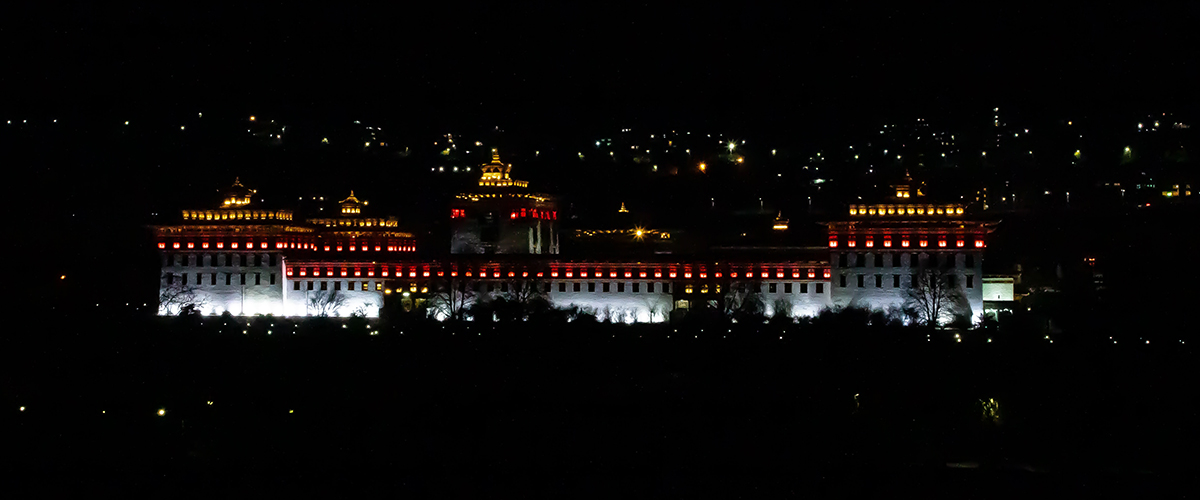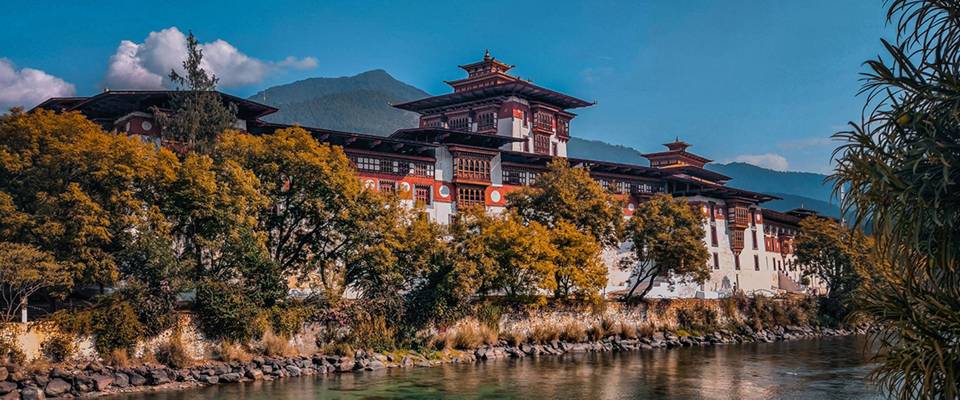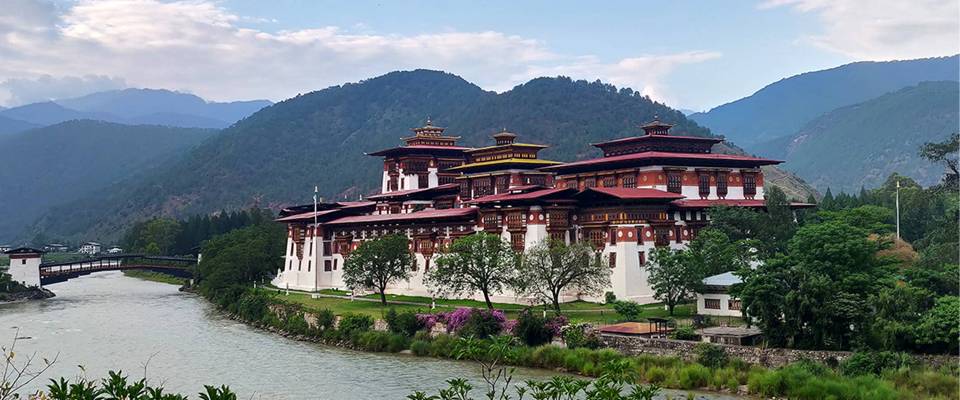
Magic Moments Bhutan - Honeymoon Special
5N/6DThimphu (2N) - Punakha (1N) - Paro (2N)
A striking and sacred space shrouded in myth, Bhutan is filled with grand examples of its extraordinary beliefs and traditional heritage, from the awe-inspiring architecture of its mountain forts and monasteries to the images of Buddhist religious figures painted or carved onto craggy rock faces.
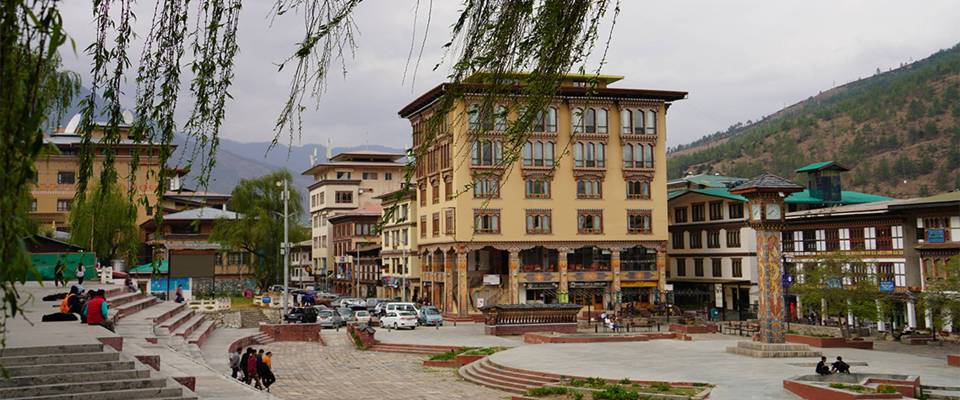
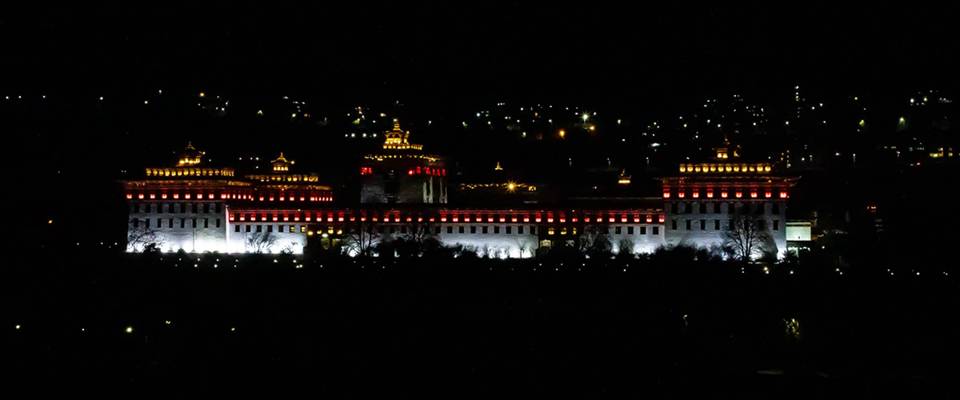
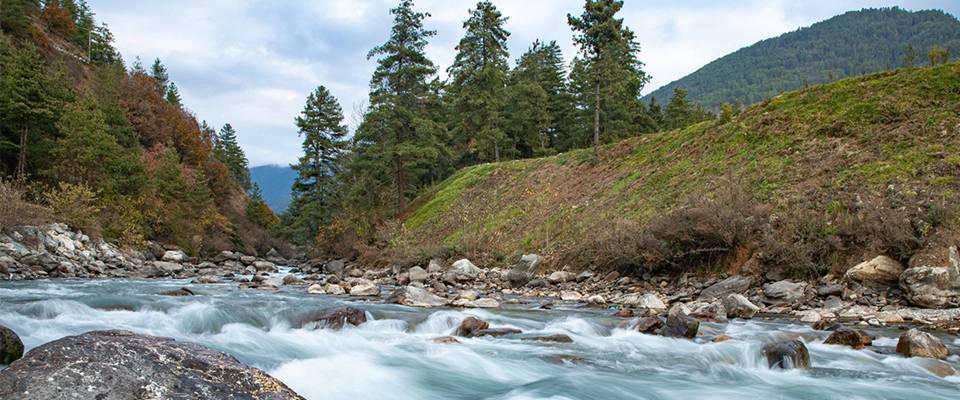
Day 1Day 2Day 3Day 4Day 5Day 6
Arrival in Paro & transfer to Thimphu (55 km/ 02 hour drive approximately)Once you arrive in Paro, you will be received by our representative and guide who will transfer you to your hotel in Thimphu. Upon arrival, proceed for check-in at your hotel. Depending on arrival time, we can proceed for city sightseeing or relax in the hotel. Visit interesting weekend market (Thu-Sun). Vegetable vendors from different pockets of the country come to sell their products.
Evening an exploratory walk around Thimphu Main Street and market area. Overnight in Thimphu
ThimphuIn the morning we will visit Handmade paper mill, School of Arts and crafts (closed on Sundays, government holidays) where students learn 13 different arts used predominantly in Bhutan. We will also visit nearby folk heritage museum and National Library before lunch. After lunch, drive pass by Memorial Chorten built in memory of the 3rd King. Visit Buddha viewpoint, Changangkha Lhakhang, the oldest temple in the valley, Enclosure where national animal, Takin are kept and Zilukha Nunnery. Overnight in Thimphu
Thimphu to Punakha (75Kms 3hrs)Today’s drive passes through Dochula pass at 3150 making the most beautiful pass in Bhutan. 108 Druk Wangyel Chortens built over the pass by queen mother in 2003 marks the pass more important than another passes. When the weather permits one can enjoy a spectacular view of the highest mountains of Bhutan at a site that stretches almost 180 degrees. Lunch at Dochula cafeteria amidst magnificent views. Then drive onward to Punakha.
Punakha served as the capital of Bhutan and seat of government until 1955 and still it is the winter seat of Je Khenpo (the chief abbot). Linked to some of the most momentous events in Bhutanese history, in 1651 Punakha was chosen to be the capital and two and half centuries later, in 1907, Punakha was, again the place where Bhutanese people elected the first King, Gongsar Ugyen Wangchuk. Blessed with temperate climate and owing to its natural drainage from Pho Chhu (male) and Mo Chhu (female) rivers, the fertile Punakha valley produces abundant crops and fruits. Located at an elevation of 1,300m above sea level, Punakha enjoys mild winters and is popular year-round destination.
Later in the afternoon visit Punakha Dzong or (Palace of Great Happiness), built in 1637 by Zhabdrung Ngawang Namgyal, at the junction of the Phochu and Mochu rivers. This majestic dzong served as both the religious and the administrative center of Bhutan in the past. It measures some 600 by 240 feet and has a six-story, gold-domed tower. Inside are courtyards and religious statuary that hint at the depth of history and spiritual tradition embodied here. Your guide will illuminate your understanding of this intricate culture that is exotic to us, though long established here. High tea at a traditional farmhouse Lobesa village.
This is followed by a short excursion to Chimi Lhakhang. The Chimi Lhakhang, situated on a hillock in the centre of the valley, also known as the temple of fertility. It is widely believed that couples who do not have children and wanting one, if they pray at this temple, they are usually blessed with a child very soon. The trail leads across rice fields to the tiny settlement of Pana, meaning ‘field’. A walk through the village near the temple will give you rare glimpses into the daily life and lifestyle of the villagers.
Overnight at the hotel in Punakha.
Punakha & Wangdue – Paro (125 km, approx. 4.1/2-hour drive)After breakfast drive back to Paro descending back down from Dochu La, follow the way back up the dramatic Wang Chhu and Paro Chhu river valleys, before crossing through Paro town towards the north end of the valley.
Situated at an altitude of 2,280m in north-western part of the country, the bucolic Paro valley used to be historically the centre of two of the most important trade routes to Tibet. Home to several prominent temples and monasteries, the country’s only international airport is located in Paro.
Later in the day after checking into hotel, proceed to visit Ta Dzong, originally built as Watchtower, which now houses National Museum. The extensive collection includes antique thangkha paintings, textiles, weapons & armour, household objects and a rich assortment of natural and historic artifacts.
Then walk down the trail to visit Rinpung Dzong, meaning (“fortress of the heap of jewels”), which has a long and fascinating history. Along the wooden galleries lining the inner courtyard are fine wall paintings illustrating Buddhist lore such as four friends, the old man of long life, the wheel of life, scenes from the life of Milarepa, Mount. Sumeru and other cosmic Mandala.
Later in the afternoon experience Traditional Bhutanese hot stone bath. Known as Dotsho in local language hot stone bath has been practiced in Bhutan for centuries as a medicinal soak. Locals believe that the bath helps in curing joint pains, helps in relaxing and other medical problems. River stones are heated and then put in water to heat the water. Also, medicinal herbs are added to the water before it is ready for the soak.
Overnight at the hotel in Paro.
ParoAfter breakfast excursion to Taktshang Monastery (approx. 5 hours round trip walk). It is one of the most famous of Bhutan’s monasteries, perched on the side of a cliff 900m above the Paro valley floor. As per local legends Guru Rinpoche arrived here on the back of a tigress and meditated at this monastery and hence it is called ‘Tiger’s Nest’. This site has been recognized as a most sacred place and visited by Zhabdrung Ngawang Namgyal in 1646 and now visited by all Bhutanese at least once in their lifetime.
Late afternoon, drive end of the Valley to newly restored Drukgyel Dzong. Built by Zhabdrung Ngawang Namgyal in 1646 to commemorate an early military victory over Tibetan invaders, the dzong name means, indeed, ‘victorious Druk’. Historically and strategically, this Dzong withstood all its glory and was featured in 1914 vide National Geographic magazine. The glory of Drukgyel Dzong remained even when it was destroyed by fire in 1951. On a clear day, one can see the commanding view of Mount. Chomolhari (7,314m) from the village, below the Dzong.
OR
After breakfast, driving excursion to Chelela pass. Chele la (pass), at an elevation 3,988 meters is considered to be one of the highest motorable passes in Bhutan. About an hour's drive along a thickly forested road, is this Pass-a botanical paradise. The pass provides stunning views of the sacred mountain Jomolhari and Jichu Drake. It is also marked by hundreds of prayer flags fluttering in the wind. During season, here visitors can see cascades of wild roses, purple and yellow primulas, and swathes of deep blue iris covering the forest floor. The top of the pass bloom with rhododendrons in a variety of colours-pale pink, deep pink, burnt orange, mauve, white and scarlet, in season.
Later en route excursion to Dzongdrakha Goempa. Often called as mini Takstang, Dzongdrakha is a cliff-side temple complex on the western side of the Paro Valley. Four shrines make up the complex, dedicated to Drolma (Tara), Tsheringma (Goddess of Longevity), Guru Rinpoche and the Buddha of the Future, Maitreya. Local oral tradition states that when Guru Rinpoche first came to Bhutan, he came from Nepal, first landing at Drakarpo, and then Dzongdrakha before arriving at Taktshang (Tiger's Nest) farther north up the valley. Located approx 20-minute drive from Paro, these temples are built on a cliff above Bondey village, but the walk is not as strenuous as Taktshang. From the road, it takes only about 30 minutes’ walk to reach here. The Dzongdrakha village has numerous temples and is known for most of their men being either fully ordained monks or gomchens (lay monks who don’t take vows of celibacy). Ironically it is the women who work in the fields and are the bread earners unlike in any other part of the country.
Later in the afternoon at leisure in Paro city centre, exploring charming, petite shops selling wide range of handicrafts and local farm products. Evening special candle light dinner at the hotel. Overnight at the hotel in Paro.
Depart ParoAfter early breakfast at the hotel, drive to the airport for flight to your onward destination. Our representative will help you with exit formalities and then bid you farewell.
Closing Days Of Some Of Monuments Mentioned In Itinerary:
Ta Dzong – Paro (national museum): closed on Government Holidays
Textile Museum – Thimphu: Closed on Government Holidays and on Sun and on Sat open from 9.00 a.m. to 4 p.m.
Overview
Bhutan, a small kingdom nestled in the eastern Himalayas, is a land of pristine natural beauty, rich cultural heritage, and unique traditions. Known as the "Land of the Thunder Dragon," Bhutan has managed to preserve its traditional way of life and remains one of the world's last intact Buddhist kingdoms. Bhutan has to offer Gross National Happiness, Breathtaking Landscapes, Ancient Monasteries and Dzongs, Cultural Festivals, Bhutanese Architecture, National Dress, Warm Hospitality.
Policy
InclusionsExclusions
- Sightseeing as per itinerary.
